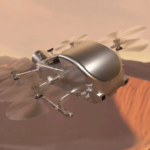
Stars are born in dense clouds of dust and gas called, adorably enough, stellar nurseries. These nurseries can be vast, spreading over 1,000 light-years across, and can produce thousands of baby stars. In order to study these busy, exciting regions, astronomers have put together thousands of images to create mosaics of five nearby nurseries, producing an atlas of star birth.
The researchers used images from the European Southern Observatory’s Visible and Infrared Survey Telescope for Astronomy (VISTA), stitching together five years of observations to show regions like the L1688 region in the Ophiuchus constellation and the IRAS 11051-7706 and HH 909 A objects in the Chamaeleon constellation.

The images were collated as part of the VISIONS project, or VISTA Star Formation Atlas, which looked in the infrared range to see the structures of these vast clouds. “The dust obscures these young stars from our view, making them virtually invisible to our eyes,” said Alena Rottensteiner of the University of Vienna in a statement. “Only at infrared wavelengths can we look deep into these clouds, studying the stars in the making.”

You can get a sense of how detailed the images are by playing with the zoomable version of this image of L1688. Each pinprick of light represents an exciting object to be investigated.
“In these images, we can detect even the faintest sources of light, like stars far less massive than the sun, revealing objects that no one has ever seen before,” said lead author Stefan Meingast of the University of Vienna. “This will allow us to understand the processes that transform gas and dust into stars.”

In total, more than one million images were used to create the atlas, including some images of the same regions taken at different periods of time. This allows researchers to see how the regions changed, watching baby stars as they are born and grow. The aim is to help astronomers answer questions about star birth, such as how many stars can be born in a region, and how massive they can grow.
The research is published in the journal Astronomy & Astrophysics.
Editors’ Recommendations


